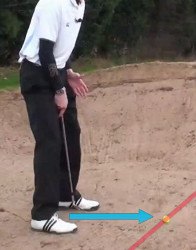
In golf, a “bad lie” refers to the position of the golf ball on the course that makes it challenging for the golfer to play a desired shot. It means that the ball is not in an ideal or favorable position, which can make it difficult to make clean contact and control the shot effectively.
A bad lie can occur for various reasons, such as the ball coming to rest in a divot (a depression on the ground caused by previous shots), a bunker (sand trap), thick rough, or an uneven lie on a slope or hill. The lie can also be affected by environmental factors like wet or muddy conditions.
When faced with a bad lie, golfers often need to make adjustments to their technique and shot selection. They may need to alter their stance, grip, and swing to accommodate the challenging lie. For example, if the ball is in a divot, a golfer may need to adjust their weight distribution or make a steeper angle of attack to avoid hitting the ground before making contact with the ball.
Handling a bad lie requires creativity, skill, and experience. Golfers may choose to play a conservative shot to ensure they can advance the ball safely or take a more aggressive approach if they feel confident in their abilities. It's important to assess the situation, evaluate the available options, and make the best decision based on the circumstances.
Dealing with bad lies is part of the challenge and strategy of the game, and golfers often practice different shots from difficult lies to develop their versatility and problem-solving skills on the course.
Bad Lie, Golf Term:When the golf ball sits in a position that makes getting clean contact difficult. Bad lies may occur on the fairway, but most often happen in the rough, a sand bunker, on patchy ground or hardpan.





